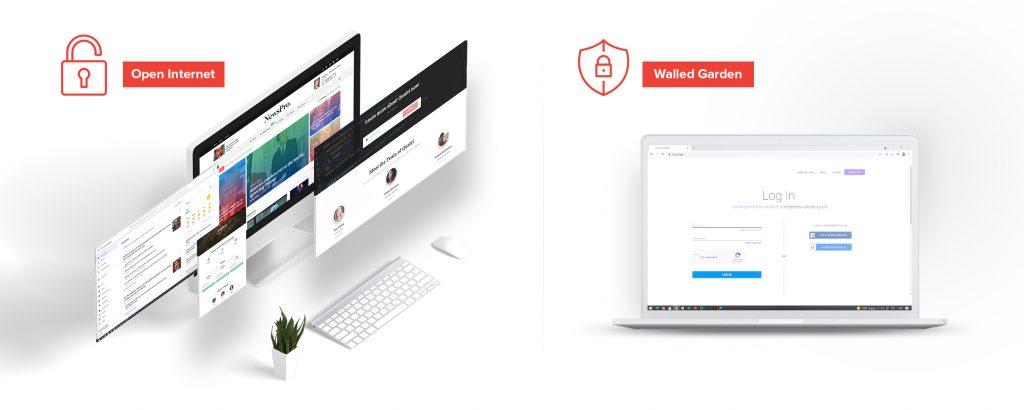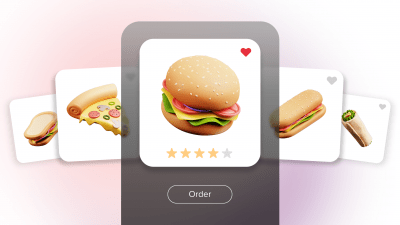Last Updated on: 26th August 2024, 04:23 pm
The marketing ecosystem is filled with intricate moving parts, and one of the more confusing ones is the DSP, leaving many marketers asking themselves, just what is a DSP anyway? Well, as a Demand Side Platform, or DSP, we here at RTB House are well-placed to answer that question for you. This article will answer that question, explain how a Demand Side Platform works, and what its role in the often complicated digital marketing landscape actually is.
In this article, you will learn:
- What a Demand Side Platform is and the role it plays in the marketing ecosystem.
- How Demand Side Platforms work.
- The difference between a Demand Side Platform and a Supply Side Platform.
- What kind of role RTB House plays as a Demand Side Platform.
Table of Contents:
- What is a DSP?
- How do DSPs work?
- What is a difference between DSP and SSP?
- Why should I use a DSP?
- Examples of DSPs
- RTB House as a DSP
- Find out if RTB House is the right DSP for you today
What is a DSP?
A DSP, or Demand Side Platform, is an advertising technology platform that advertisers and agencies use to buy digital advertising inventory across multiple ad exchanges and Supply Side Platforms in real-time. In essence, a DSP pools together a huge pool of the advertising industry into a single centralized location, making it possible for ad buyers to access a variety of ad spots from a single interface.
DSPs began appearing in 2007 with the rise of real-time bidding (RTB) technology. Prior to RTB, ad buyers had to manually negotiate with individual publishers or other ad space providers in order to place ads. RTB enabled advertisers to instantly buy ad spots without needing to directly speak to a publisher. Demand Side Platforms then collected data from all these providers, and a whole new way of advertising was born.
How do DSPs work?
Not all Demand Side Platforms offer the same capabilities, but they function in a broadly similar way. It looks a little something like this:
- Inventory access: The DSP integrates with various ad exchanges and SSPs to access as wide a range of ad auctions and opportunities as possible.
- Targeting options: Advertisers then define their target audience, and the DSP uses this to determine a bidding strategy. In a modern context, this process is largely done without human intervention, for example, RTB House uses Deep Learning to help determine the best ad placements in real time.
- Real-time bidding (RTB): When a user visits a website or interacts with a mobile app, an ad spot is put up for auction in real time through an ad exchange. Numerous DSPs participate in these auctions on behalf of advertisers and attempt to determine the best ad impressions to bid for in order to hit their clients’ target goals.
- Bid evaluation and decision-making: As part of the RTB process, a DSP will analyze a huge array of factors in real-time, often using Artificial Intelligence, or in RTB House’s case, Deep Learning, to assist them. This information is then used to calculate the optimal bid amount for an impression, and the DSP with the highest bid wins the opportunity to display their ad. This whole process takes under a second.
- Ad serving and display: Once a DSP wins an auction, it displays optimal creative to the user within the won ad spot.
- Tracking and optimization: The key to a campaign’s success is optimization, and a single campaign regularly involves millions of individual ad impressions. Throughout this entire process, the DSP tracks key performance metrics and optimizes the campaign to hit specific goals, such as return on investment (ROI).
- Reporting and analytics: Any DSP worth its salt will also provide analytics during the process of a campaign. These help advertisers track the performance of their campaigns and ensure that their goals are being met.
In addition to this general flow, individual DSPs will have different unique selling points and solutions available to advertisers. For example, RTB House focuses heavily on using Deep Learning to improve campaign outcomes and is also a leader in the preparation for the shift to cookieless advertising.
“Deep Learning enables RTB House to excel as a DSP. It allows us to make split-second decisions with unparalleled precision. By analyzing vast datasets, our AI algorithms can predict user behavior, optimize ad bidding, and personalize ad placement in real time. This not only maximizes ROI for advertisers but also enhances the relevance and effectiveness of ads for users. Our commitment to innovation ensures that our clients stay ahead in the dynamic landscape of digital advertising.“
~Dawid Kropidłowski, Business Product Manager
What is the difference between a DSP and SSP?
Demand Side Platforms and Supply Side Platforms are both essential parts of the programmatic advertising ecosystem. However, they both serve different functions and cater to different stakeholders, so what’s the difference between a DSP and SSP?
| DSP | SSP | |
| Who do they serve | DSPs are used by advertisers, agencies, and marketers to manage, optimize, and execute their ad campaigns, targeting specific audiences and maximizing the effectiveness of their advertising spend. |
SSPs facilitate the integration of various demand sources, including direct advertisers, ad networks, and DSPs, to ensure that publishers can monetize their ad inventory effectively. |
| What role do they play? | DSPs allow advertisers to purchase digital advertising inventory across multiple ad exchanges and SSPs in real time. | SSPs help publishers maximize the revenue generated from their digital ad inventory. |
| What do they offer? | DSPs offer sophisticated targeting options, real-time bidding capabilities, campaign management tools, and reporting/analytics functionalities to help advertisers achieve their campaign objectives. | SSPs facilitate the integration of various demand sources, including direct advertisers, ad networks, and DSPs, to ensure that publishers can monetize their ad inventory effectively. |
Why should I use a DSP?
Well, in part because you probably already are. The most popular “do it yourself” advertising platforms, like Google or Instagram ads, are a form of “closed” DSP that focuses on providing advertisers access to their own walled garden ecosystems. This is limiting you from reaching your users on the Open Web. Therefore, in this context, the question becomes why you should use a more broad-focused Demand Side Platform.
There are three main reasons to look at a DSP, and how any particular provider approaches these situations will help you determine if they’re a good fit for your campaign:
Inventory access
While Meta can give you access to Facebook and Instagram ads, other DSPs can give you access to the Open Web. This includes a wide variety of newspapers, online websites, and other direct placements designed to help you connect with potential customers.
Different DSPs might have access to different inventories. This can mean that it makes sense to have two or more DSPs working together on a single campaign in order to maximize your total reach.
Optimization and technology
A key advantage a DSP has is access to information and technology, ensuring the best use of information. While you can certainly optimize your own ad spend in self-serve platforms, you will be doing so with a limited amount of data. DSPs have access to data from all of their ongoing and historical campaigns. This enables them to make very precise optimizations that may not be available to you as an individual advertiser.
Targeting capabilities
User targeting has become an increasingly tricky issue. Privacy concerns mean that many demographic-based targeting methods are falling out of use, which means that access to data processing and analysis is the deciding differentiator. DSPs like RTB House, which focuses on cookieless retargeting techniques, will be able to help you reach users without needing personally identifiable information.
Examples of DSPs
A DSP is a broad term, and when understanding what a DSP is, it can be helpful to look at some specific examples.
Google and YouTube Ads
Google is the first big player that jumps to mind. The company provides advertisers with access to two powerful tools, Google and YouTube Ads. This enables advertisers to place their content in Google search results, on websites that have enrolled in the Google Display Network, and video ads alongside YouTube content.
Google is a big player that combines elements of both a Supply Side Platform and a Demand Side Platform.
Meta
Another major DSP is Meta, which controls Facebook Ads, Instagram Ads, and Threads. This DSP is a good choice for any highly visual ads; however, it is a walled garden. This means that any adverts displayed can only be seen on the Meta network, which somewhat limits its overall ad inventory.
Amazon
Amazon is the world’s largest retailer, and it also happens to have its own DSP: Amazon Ads. This service allows advertisers to display ads across Amazon’s entire ecosystem of products. This includes sponsored product placements in the Amazon store, video ads on the Amazon Fire TV or website, and Amazon Native Ads on a company’s own website.
RTB House as a DSP
Our previous examples all have one thing in common: They’re walled gardens. Each one offers large amounts of reach within their specific kingdoms, but they don’t offer advertisers the ability to access the open web.
RTB House takes a different approach by operating on the Open Internet. Rather than attempting to own an entire ecosystem, we connect inventory from across a wide range of channels and locations and give advertisers the opportunity to meet users anywhere on the web rather than on specific social media or ecommerce channels.

Another important differentiator is our experience with cookieless retargeting techniques, the Privacy Sandbox more generally, and the Protected Audience API in particular. This places RTB House as the leading DSP for privacy-friendly advertising and ensures that our clients are able to continue personalized advertising without relying on third-party cookies.
Additionally, we use Deep Learning across all of our solutions. This means that we are able to optimize ad campaigns in real time and make micro-adjustments that have a significant impact on the overall success of a campaign, no matter what medium it is displayed on.
Find out if RTB House is the right DSP for you today.
We have helped thousands of companies just like yours achieve or exceed their marketing goals. We believe that our broad range of premium advertising inventory, combined with privacy-friendly advertising products, make an excellent choice for any company looking to take their advertising game to the next level.
If you want to find out more, let’s talk today.





